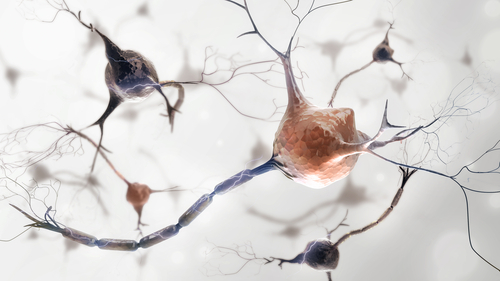Repair Cells Change in Neurodegenerative Disorders, Promoting Muscle Wasting and Scarring, Study Says

Cells that normally help to repair injured muscle tissue — called fibro-adipogenic progenitors — become key players in the muscle wasting and scarring processes in neurodegenerative diseases, such as amyotrophic lateral sclerosis (ALS), a study has found.
Conducted by researchers at Sanford Burnham Prebys Medical Discovery Institute (SBP), in collaboration with the Fondazione Santa Lucia IRCCS in Rome, the study, “Denervation-activated STAT3–IL-6 signalling in fibro-adipogenic progenitors promotes myofibres atrophy and fibrosis,” was published in Nature Cell Biology.
Fibro-adipogenic progenitors, or FAPs, are supportive progenitor cells in the muscle, with the ability to generate fat and connective tissue cells.
In normal conditions, FAPs are activated in response to muscle injury to coordinate the activity of the immune system and muscle stem cells — cells that are able to grow into different types of muscle cells when activated – to repair the damaged tissue.
In neuromuscular disorders, such as ALS and spinal muscular atrophy (SMA), nerve cells stop communicating with muscle cells, causing muscles to progressively deteriorate and even disappear. The same phenomenon occurs in spinal cord injuries, because the lines of communication between nerve and muscle cells are physically destroyed.
Although there are medications to treat the symptoms and delay disease progression, there is no cure yet for these neuromuscular disorders. Researchers believe that understanding more about the molecular and cellular mechanisms involved in these diseases is critical for the development of new therapies.
“Characterizing the cell type that promotes muscle wasting and scarring in models of neuromuscular disorders is a critical step forward in our understanding of ALS and additional motor neuron diseases,” Pier Puri, MD, a professor in the Development, Aging and Regeneration Program at SBP and senior author of the study, said in a press release. “Now we can start working on designing medicines that target these cells or possibly use them as markers of disease progression, which can’t come soon enough for patients and their caregivers.”
When Puri’s team analyzed mouse models of acute muscle injury, they observed that FAPs were recruited in a timely manner to damaged tissues and left within the normal time frame required for complete regeneration, which is typically between five to seven days.
FAPs entered the damaged site after macrophages — cells from the immune system that clear dead material from tissues — and before activation of the muscle stem cells.
On the contrary, when they analyzed mouse models of denervation, or loss of nerve cells, they found that FAPs gathered at injury sites and never left. In these cases, macrophages never reached the injury sites, and muscle stem cells were not activated.
When the investigators took a closer look at these abnormal FAPs in mouse models of neurodegeneration and in the muscles of ALS patients, they found these cells had a persistent activation of STAT3, together with high levels of IL-6, an inflammatory substance that promotes muscle atrophy and scarring.
Interestingly, they also noticed FAPs activated STAT3-IL-6 signaling after nerve cells stopped communicating with muscle cells in a region called the neuromuscular junction, indicating that these lines of communication between nerve and muscle cells are essential to keep FAPs under control.
When researchers blocked STAT3-IL-6 signaling using specific antibodies to neutralize IL-6 in FAPs, muscle wasting and scarring was halted in animal models of acute denervation and ALS, suggesting these selective inhibitors could be used to treat neuromuscular disorders.
“This study highlights an interesting and promising pathway initiated in response to the loss of neuromuscular junctions; and when blocked, reduced muscle wasting in model systems of ALS,” said Lucie Bruijn, PhD, chief scientist at the ALS Association. “Further studies to understand this pathway in people with ALS and optimization of potential lead molecules will be important in developing this therapeutic approach for ALS.”
These findings highlight the importance of neuromuscular junctions for FAP regulation and the functional versatility of these cells in response to normal and pathological conditions.
“Now that we have found a key difference in these FAP cells, we have an opportunity to selectively remove the bad, disease-causing cells, or convert the cells so they can repair nerves. Ultimately, we hope to create a medicine that extends the life of people with ALS or other motor neuron diseases, or perhaps a test that helps doctors better predict the disease’s severity,” Puri said.






